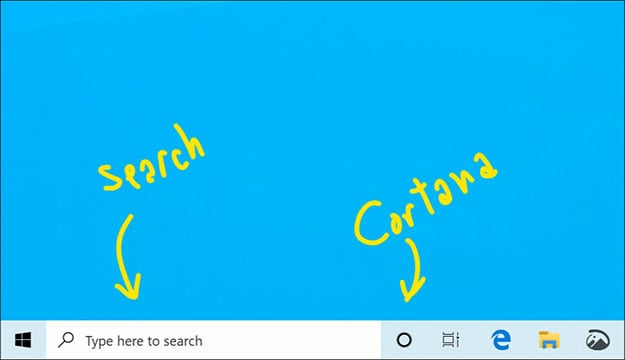Microsoft's Windows 10 Preview Build Decouples Cortana And Search Functions

Microsoft has started pushing out a new preview build of Windows 10 (build 18317) to Windows Insiders who are subscribed to the Fast ring, and with it comes a pretty big change. The latest preview build separates Search and Cortana in the taskbar so they can be developed independently.
"Some Insiders have had this update for a few weeks now, and we appreciate all the feedback we’ve received about it so far! For those new to this update, when it rolls out to you, you’ll find clicking the search box in the taskbar now launches our experience focused on giving you the best in house search experience and clicking the Cortana icon will launch you straight into our voice-first digital assistant experience," Microsoft explains.
The idea here is that not everyone is interested in an integrated experience. Microsoft says this decoupling will enable the Windows team to innovate Search and Cortana each on their own "to best serve their target audiences and use cases." In addition to splitting them up, other available Search and Cortana settings have also now been split between the two, along with the related group policies.
That's not the only separation being introduced in the latest preview build. Up until now, Start in Windows 10 has been hosted by ShellExperienceHost.exe. In the new build, however, it's been separated into its own process called StartMenuExperienceHost.exe.
"This has a number of benefits, including simplifying debugging and insulating Start from potential issues impacting other surfaces," Microsoft says.
Microsoft has been experimenting with this change for several weeks and claims to have seen "measurable improvements in the reliability" of the Start experience. As such, it has decided to roll it out to everyone who is in the Windows Insider program, starting with Fast ring subscribers.
There are a few other changes, such as a better font management experience in Settings (users can drag and drop font files from File Explorer into the modern Settings > Fonts page to install them, and then click on them to view the different font faces), and a spattering of bug fixes and general improvements.
These builds are all related to the next major update to Windows 10, codenamed 19H1. Microsoft has committed to upgrading Windows 10 twice year. The 19H1 build will be the first for 2019 when it rolls out, presumably sometime this spring.

